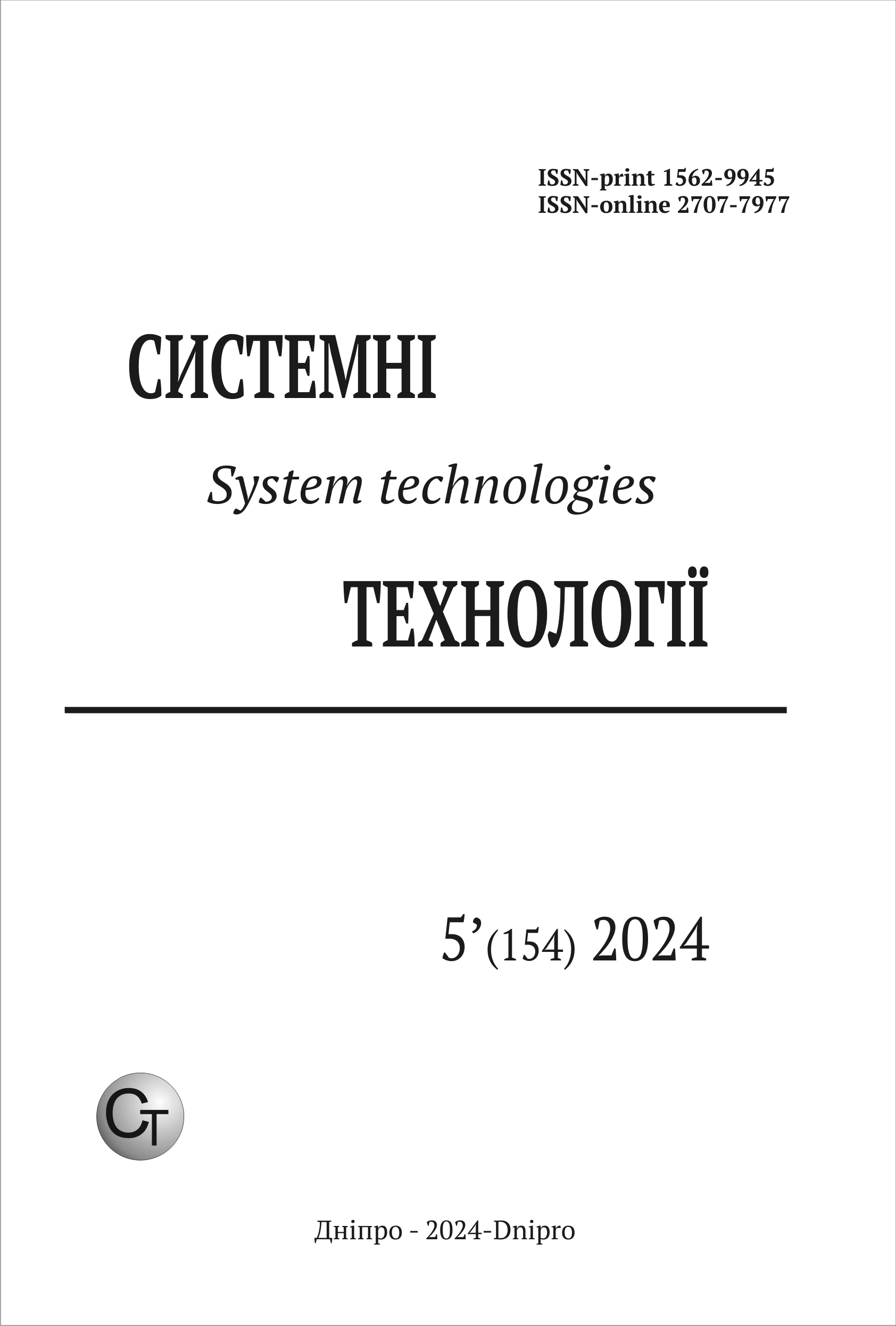Mathematical model and general algorithm for solving the problem of processing messages taking into account their value and aging in aircraft systems
DOI:
https://doi.org/10.34185/1562-9945-5-154-2024-01Keywords:
mathematical model, aircraft, algorithm, object-oriented programming, inheritance, polymorphism.Abstract
According to research, the world's leading countries, such as the USA, Great Britain, Japan, etc., are actively engaged in the development of automated and automatic systems based on artifi-cial intelligence (AI) in the military sphere and even already have a roadmap for the integration of unmanned systems in the medium and long term prospects. The purpose of this work is to describe a general algorithm for controlling an aircraft system with using controlled discipline taking into account the value characteristics of messages. In addi-tion, an overview of the existing technical solution for the rational division of the algorithm into modules is offered. In the paper considers a mathematical model of the mass service system, where the messages are characterized not only by limit time of execution, but also by another important characteristic - the value of each individual message in the same type of queue. The authors proposed a definition of the efficiency of message processing by system elements. The authors believe that a such model can be quite relevant with the development of unmanned (aircraft) vehicles in the structure of the armed forces of Ukraine. It is especially relevant and appropriate in conditions of active combat operations, where the real situation is very dynamic and the messages entering to the system have different values within the same period of time. The existing technical solution for the optimal (ra-tional) division of the algorithm into modules is considered. This will allow to parallelize the soft-ware development process, test individual modules and make changes in accordance with the latest technical solutions without the need to change the entire system architecture.
References
B. Moroz, A. Kruhlyk, D. Moroz, A. Martynenko. Mathematic model of the rational organiza-tion of the information flows processing in aircraft delivery system. System technologies. 2024. Т. 2, № 151. pp. 3–12. doi: 10.34185/1562-9945-2-151-2024-01.
V. Sviridov, B. Moroz. Organization of information processing processes according to the criteria of value and aging in automated control systems. Kharkiv: Osnova, 1992. 112 p.
Shvachych G. G., Moroz B. I. Pobochii I. A., Sushco L. F., Busydin V. V. Computer modeling and optimization of complex system. 4-th International scientific-technical conference. (Dnipro, 1-2.11.2018) / prod. by the the Department of Information Technology SHEI USCaTU. Dnipro : Bal-ance-Club, 2018. pp. 196 – 199.
Exoskeletons as modern combat armor: Ukraine ignores this trend so far. / Defense-Express: website. URL: https://defence-ua.com/weapon_and_tech/ekzoskeleti_suchasni_bojovi_obladunki_ukrajina_poki_scho_ignoruje_tsej_trend-805.html. (date of app: 19.03.2024)
"Flying around" traffic jams has become a reality: unmanned flying taxis are being launched in China / Abroad. Website. URL: https://newsauto.com.ua/za-kordonom/obletity-zatory-stalo-realno-u-kytayi-budut-bezpilotni-litayuchi-taksi/. (date of app: 02.02.2024).
V. Zalypka. Analysis and synthesis of classification signs of the means of interaction with exter-nal objects and the environment of multipurpose robotic platforms for their further transformation. International Science Journal of Engineering & Agriculture. Vol. 2, №. 2, 2023, pp. 21-33. doi:10.46299/j.isjea.20230202.03.
V. Zalypka. Peculiarities of the creation and use of ground robotic complexes in the leading countries of the world and Ukraine. Scientific Bulletin of UNFU. №4, 2022, pp. 60–65. doi: 10.36930/40320410.
M. Katsman, V. Matsyuk, V. Myronenko. Modeling the reliability of transport under extreme conditions of operation as a queuing system with priorities. Control, Navigation and Communica-tion Systems. № 73, 2023. pp. 10-17. doi: 10.26906/SUNZ.2023.3.010.
Methods of modeling combat operations of troops (forces): tutorial. / T. Pashchenko, S. Mykus, V. Solonnikov and oth. / – Кyiv.: NDUU named after Ivan Chernyakhovskyi, 2021. 262 p.
V. Chyhin. Creation of computer facilities for controlling an autonomous aircraft with the use of remote cloud calculations. Computer systems and networks. Vol. 3, № 1, 2021. pp. 106-113. doi: 10.23939/csn2021.01.106.
D. Puida. Modification of a thread Pool algorithm with multiple task queues. Computer systems and networks. Vol. 5, № 1, 2023. pp. 96-102. doi: 10.23939/csn2023.01.096.
A. Obshta, V. Buhaiets. Cross-platform software system for the logistics of humanitarian ser-vices. Computer systems and networks. Vol. 5, № 1, 2023. pp. 79-88. doi: 10.23939/csn2023.01.079.
Modern systems of automatic control of technological complexes: tutorial. / A. Silvestrov, M. Ostroverkhov and oth. – Kyiv: KPI named after Igor Sikorsky, 2023. 386 p.
G. Myers. The art of software testing. Second Edition: tutorial. Hoboken, New Jersey: Pub-lished by John Wiley & Sons, Inc., 2004. 255 p.
B. Moroz. Methods and means of organizing information processing processes according to the criteria of value and aging in automated control and information service systems: dissertation for the degree of Doctor of Technical Sciences, Dnepropetrovsk State University, Dnepropetrovsk, 1992. 358 p.
Downloads
Published
Issue
Section
License
Copyright (c) 2024 System technologies

This work is licensed under a Creative Commons Attribution 4.0 International License.















